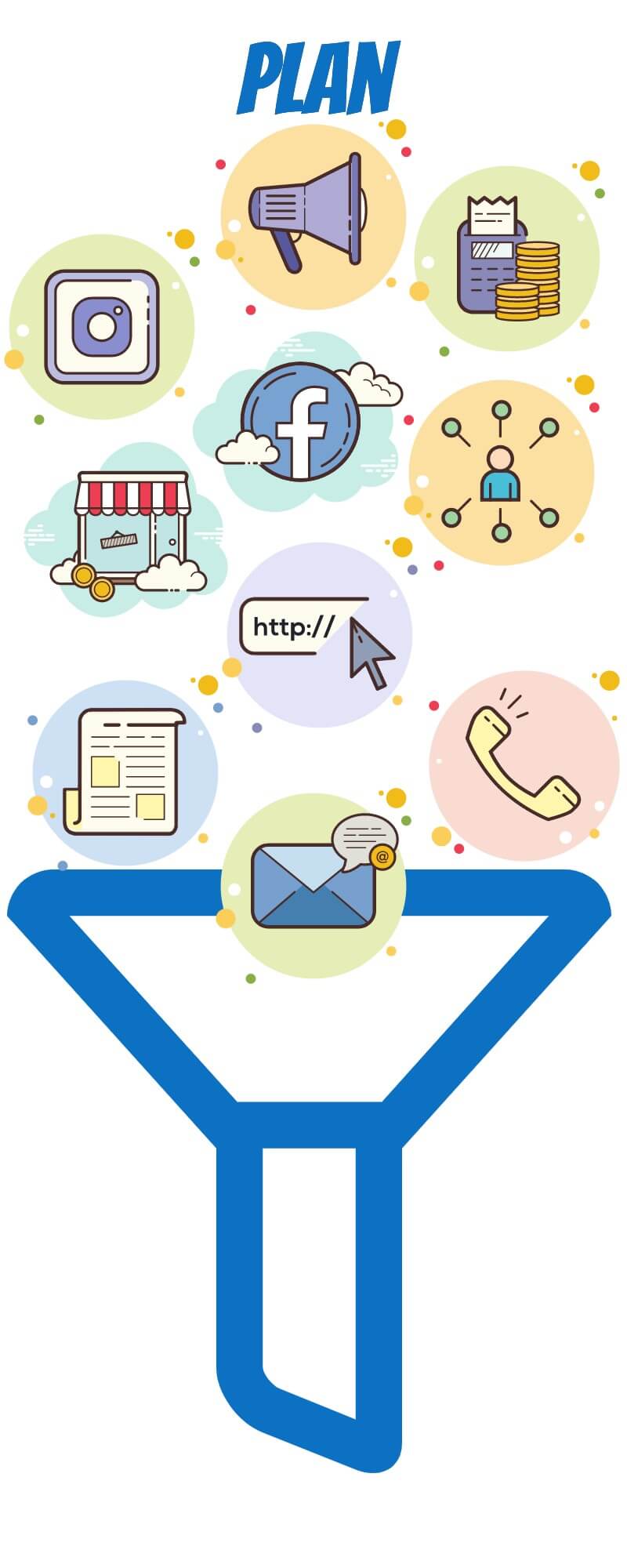The first cone in your inbound marketing funnel is for planning. So in this article, we’ll talk about how to plan your funnel.
Plan Your Funnel
When I purchase cooking oils from Vom Foss they are funneled into a glass bottle for me to take home. The funnel represents the method of transport and delivery. If a funnel weren’t used, the process would be wasteful, messy, and inefficient. Your marketing funnel is the method of delivery to achieve sales for campaigns. It keeps your marketing from wasting money, getting messy, and unorganized. So think of the funnel as the optimal method of delivering curious explorers to repeat buyers.
Think about the goals of the campaign. Who is the target audience? How can you reach that audience? There’s a lot of branding and content you can push through the funnel but you don’t need to overload it. So only use what will complement your plan best based on those goals and ideal clients. If I’m going after teens, Snapchat is better than LinkedIn. If I’m going after senior citizens, print is better than email campaigns. If I’m promoting a visual product, Instagram and Pinterest will work better than cold calling. So this about what you’re pushing and to whom.
What Does It Look Like
Once you plan your funnel and decide what you’re putting in, create the materials that are relevant. Print Ad, Email Campaign, Social Content Calendar, Sales, Cold Call Scripts, SEO Keyphrases, etc. Begin putting the road map in place for getting your content out there. You won’t need all of your efforts so plan your funnel carefully so you don’t overdo it.
